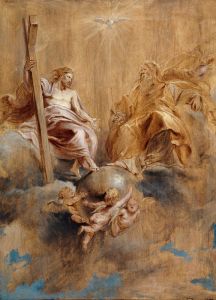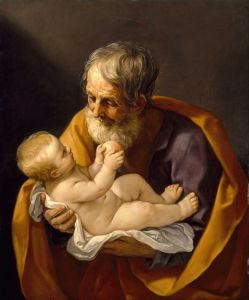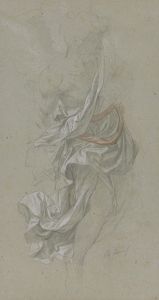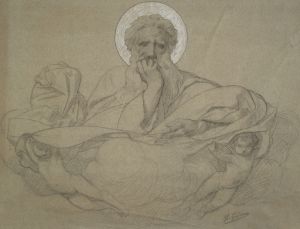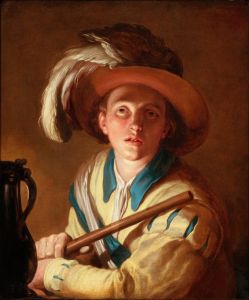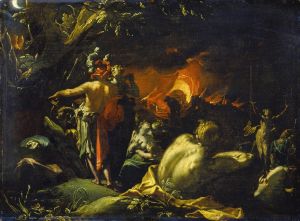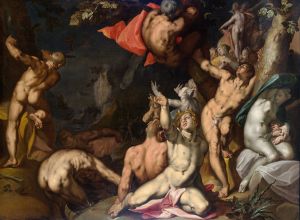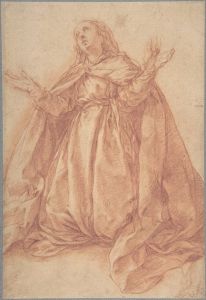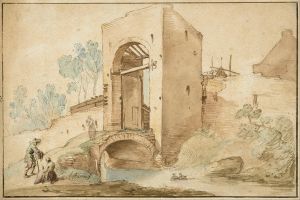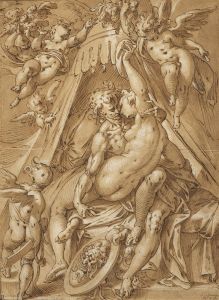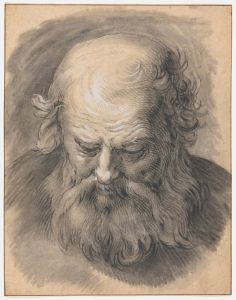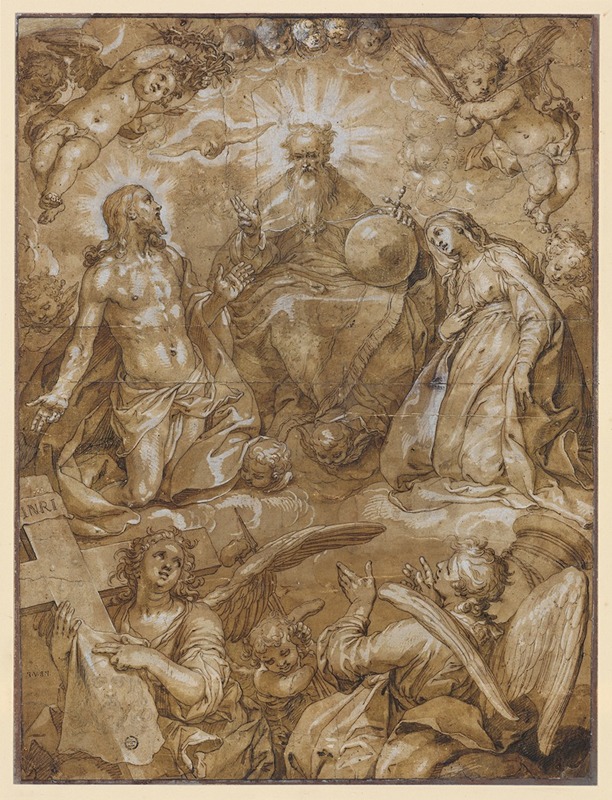
Intercession of Christ and Mary before God the Father
A hand-painted replica of Abraham Bloemaert’s masterpiece Intercession of Christ and Mary before God the Father, meticulously crafted by professional artists to capture the true essence of the original. Each piece is created with museum-quality canvas and rare mineral pigments, carefully painted by experienced artists with delicate brushstrokes and rich, layered colors to perfectly recreate the texture of the original artwork. Unlike machine-printed reproductions, this hand-painted version brings the painting to life, infused with the artist’s emotions and skill in every stroke. Whether for personal collection or home decoration, it instantly elevates the artistic atmosphere of any space.
Abraham Bloemaert, a prominent Dutch painter and printmaker of the late 16th and early 17th centuries, is known for his contributions to the Northern Mannerist movement and later to the Dutch Baroque style. One of his notable works is "Intercession of Christ and Mary before God the Father." This painting exemplifies Bloemaert's skill in religious compositions, a common theme in his oeuvre, reflecting the spiritual and artistic milieu of his time.
Bloemaert was born in 1566 in Gorinchem, the Netherlands, and received his artistic training in Utrecht, Paris, and Amsterdam. His education exposed him to various artistic influences, including the Italian Renaissance and the Northern Mannerist style, which is characterized by elongated figures and complex compositions. Bloemaert's work often features dramatic use of light and shadow, vibrant colors, and dynamic figures, all of which are evident in "Intercession of Christ and Mary before God the Father."
The painting depicts a religious scene where Christ and the Virgin Mary are shown interceding with God the Father on behalf of humanity. This theme of intercession was a popular subject in Christian art, symbolizing the compassionate role of Christ and Mary as mediators between God and humankind. In the composition, God the Father is typically portrayed as a majestic figure, often seated on a throne, with Christ and Mary positioned in a manner that suggests their pleading or advocacy.
Bloemaert's depiction of this scene would have been intended to inspire devotion and reflection among viewers, aligning with the Counter-Reformation efforts to reaffirm Catholic doctrines through art. The Counter-Reformation was a period of Catholic revival beginning in the late 16th century, during which the Church sought to counter the Protestant Reformation and renew its influence through various means, including the commissioning of religious artworks.
In "Intercession of Christ and Mary before God the Father," Bloemaert likely employed his characteristic use of color and light to enhance the emotional and spiritual impact of the scene. His figures are often noted for their graceful poses and expressive gestures, which serve to convey the narrative and theological significance of the intercession theme.
Bloemaert's work was influential in the development of Dutch art, and he was a founding member of the Utrecht Guild of Saint Luke, an important institution for artists in the region. His legacy includes not only his paintings but also his role as a teacher to many prominent artists of the Dutch Golden Age, such as Gerard van Honthorst and Hendrick ter Brugghen.
While specific details about the provenance or current location of "Intercession of Christ and Mary before God the Father" may not be widely documented, Bloemaert's contributions to religious art remain significant. His ability to blend the stylistic elements of Mannerism with the emerging Baroque sensibilities helped shape the trajectory of Dutch painting in the 17th century. Through works like this, Bloemaert's influence extended beyond his lifetime, leaving a lasting impact on the artistic landscape of the Netherlands.





